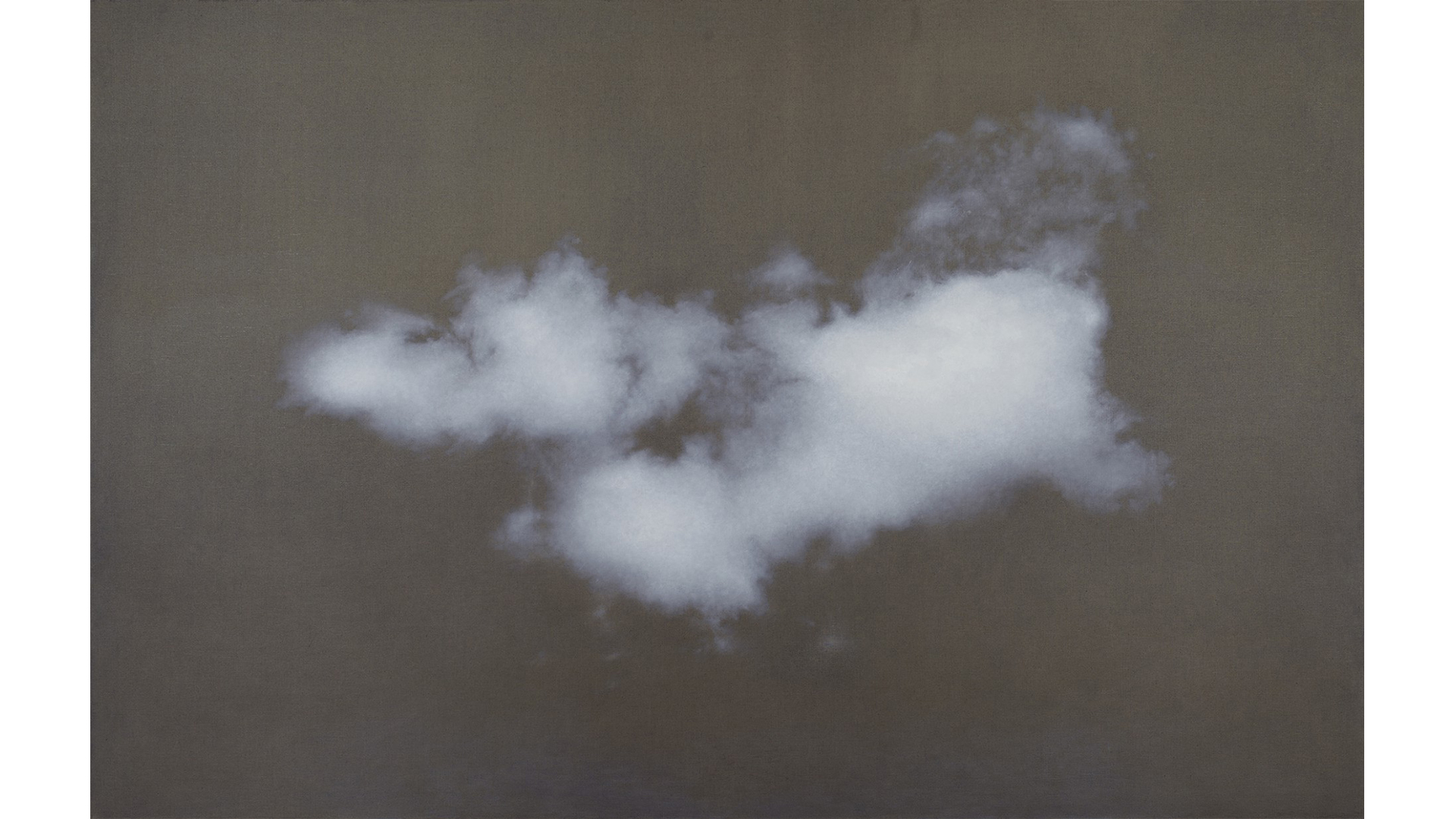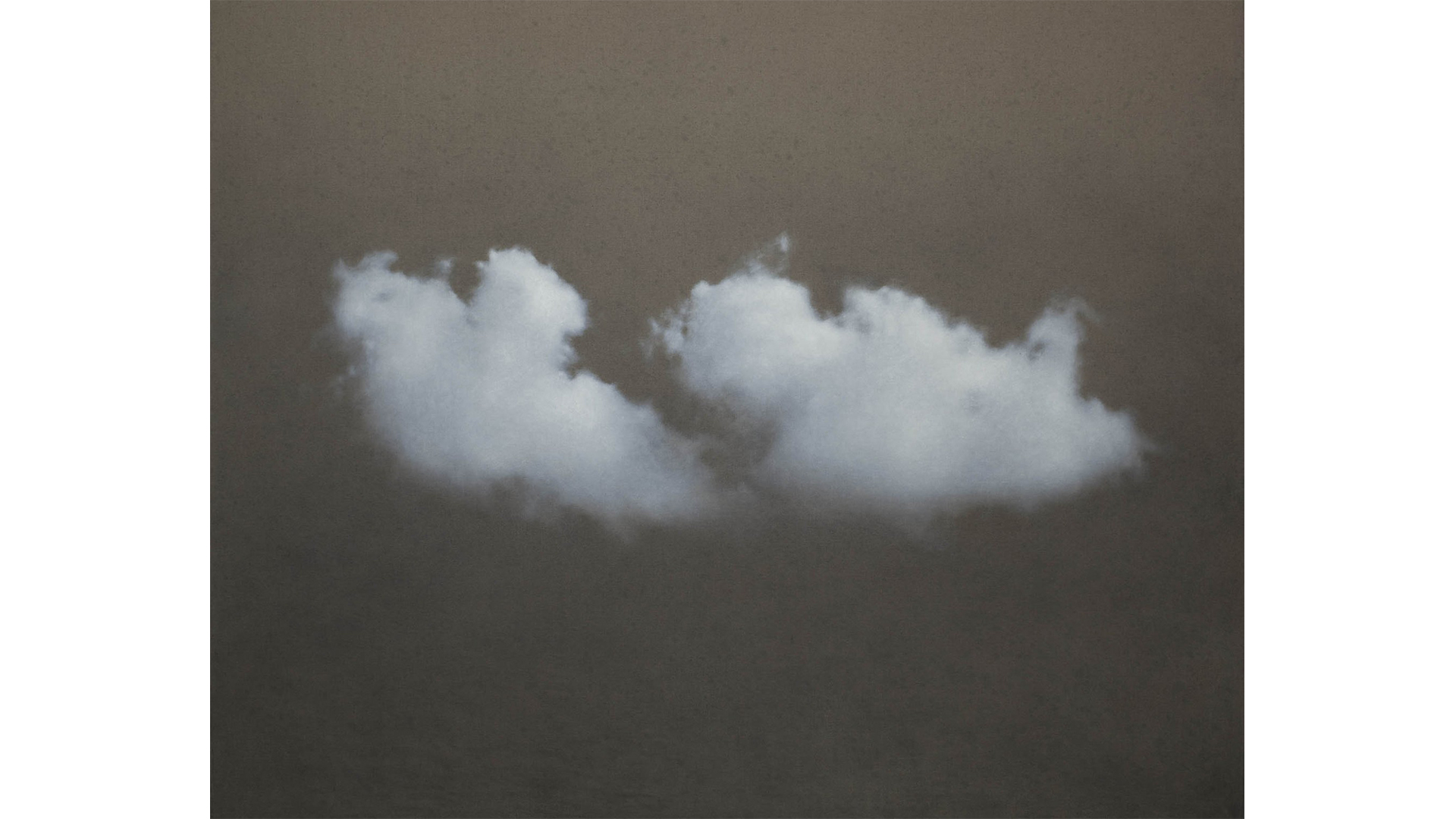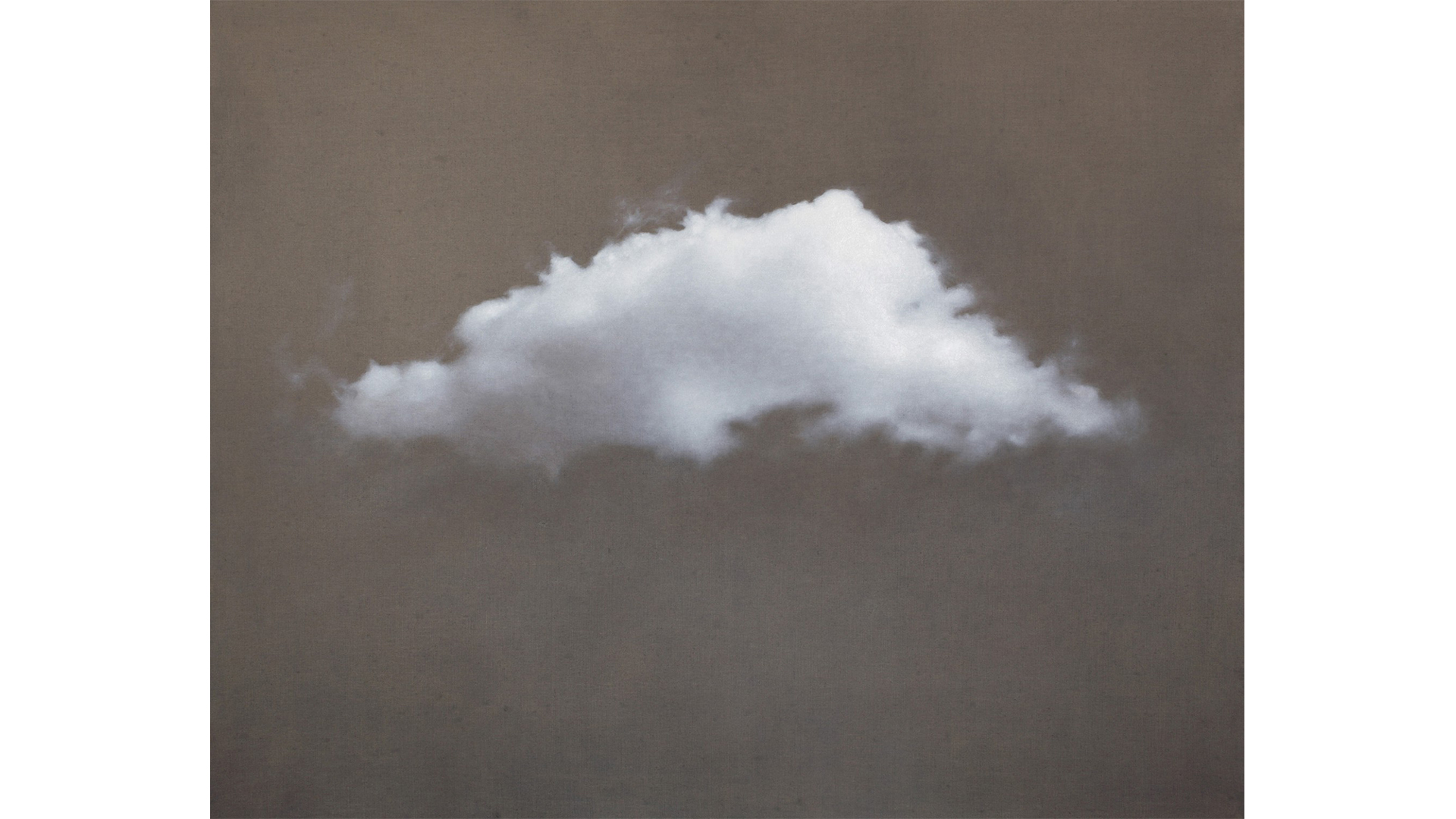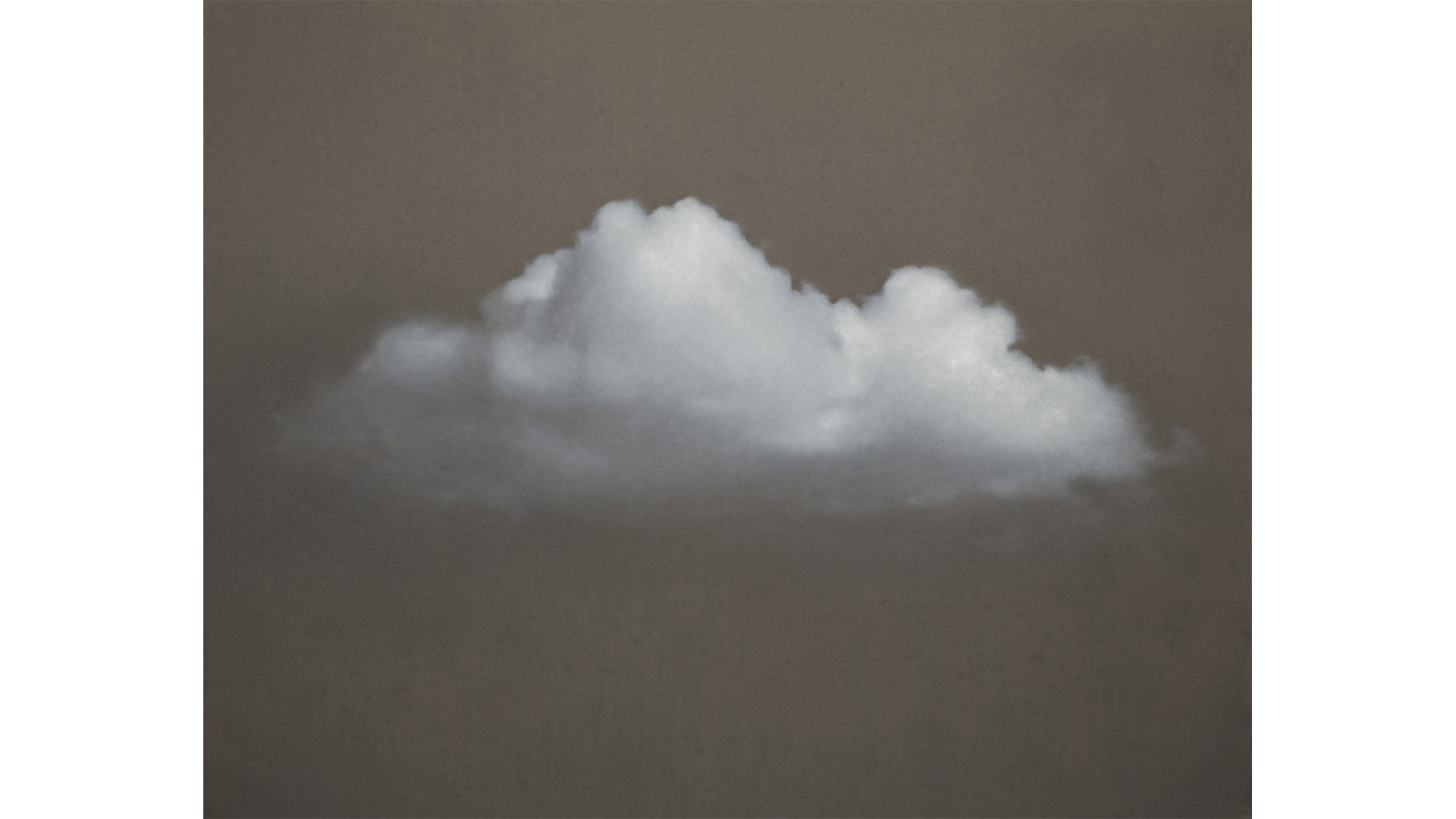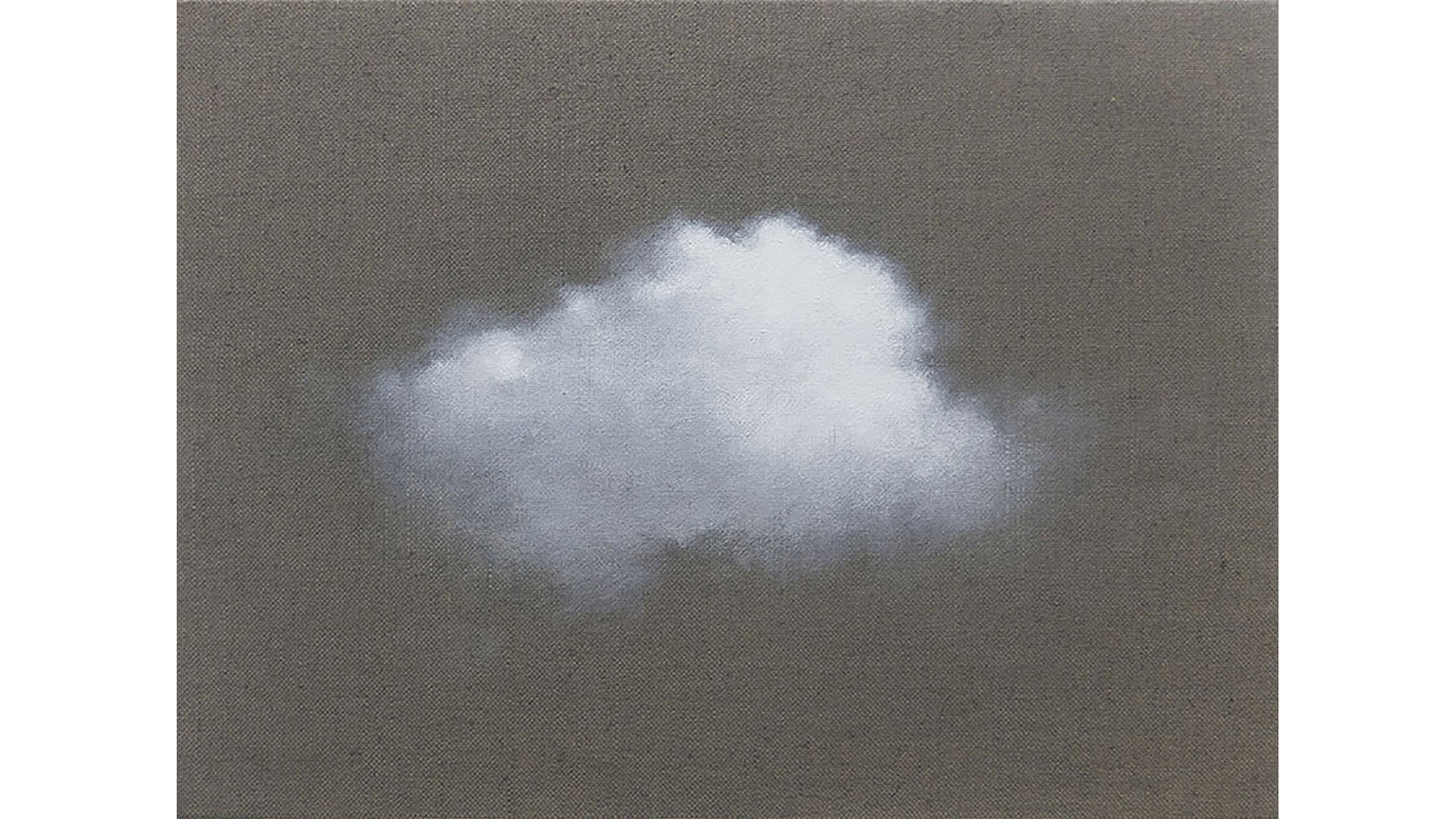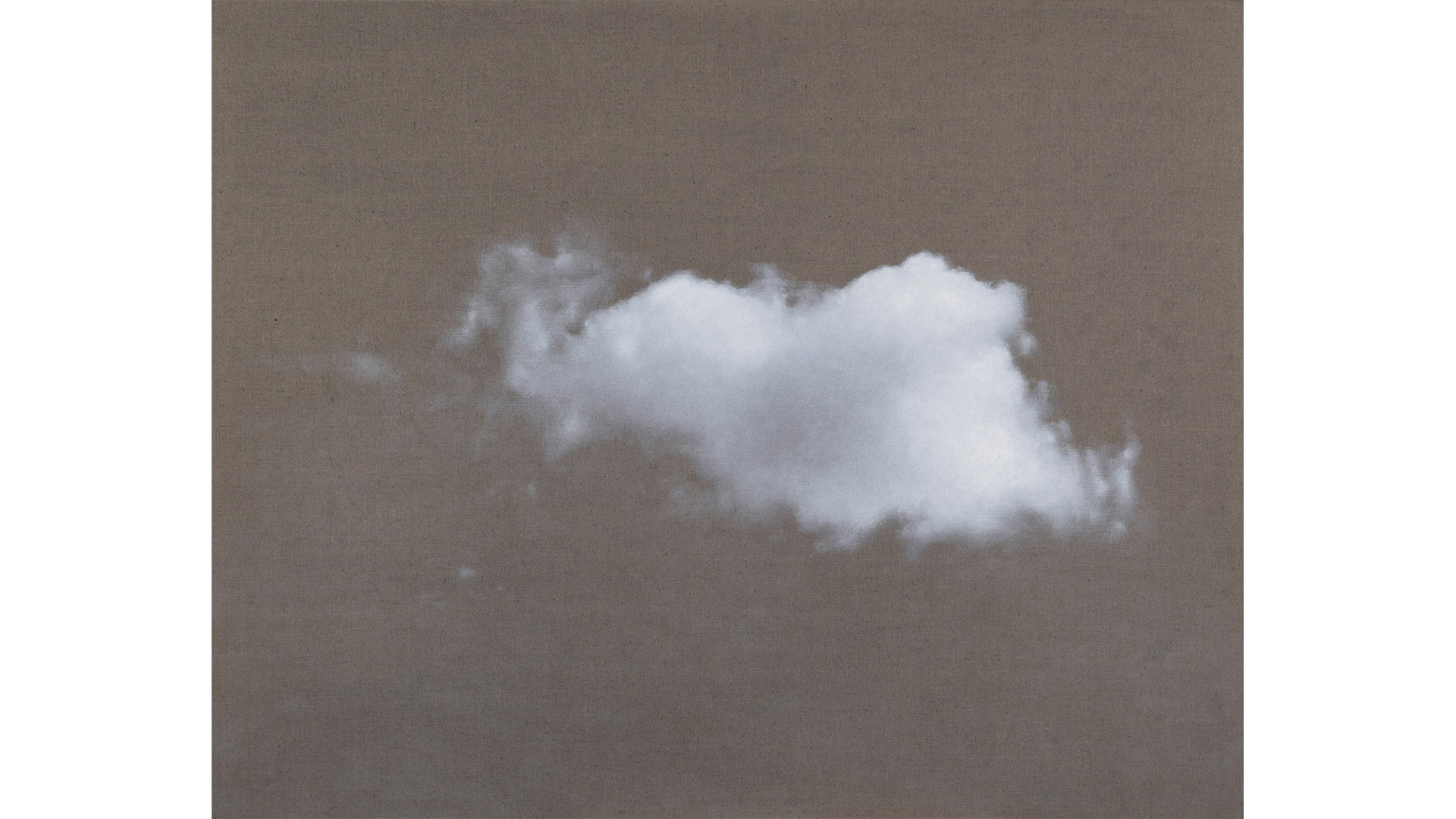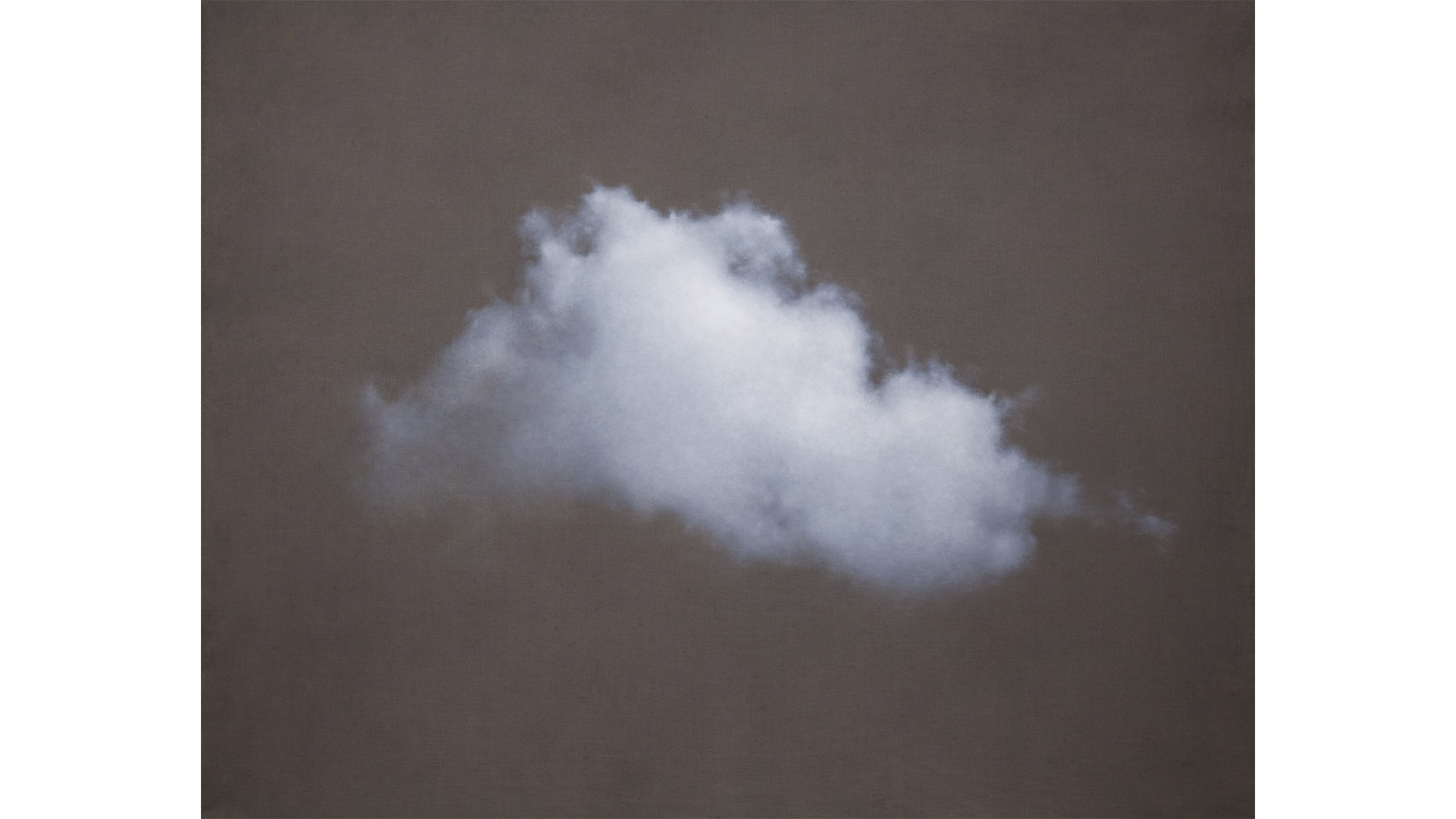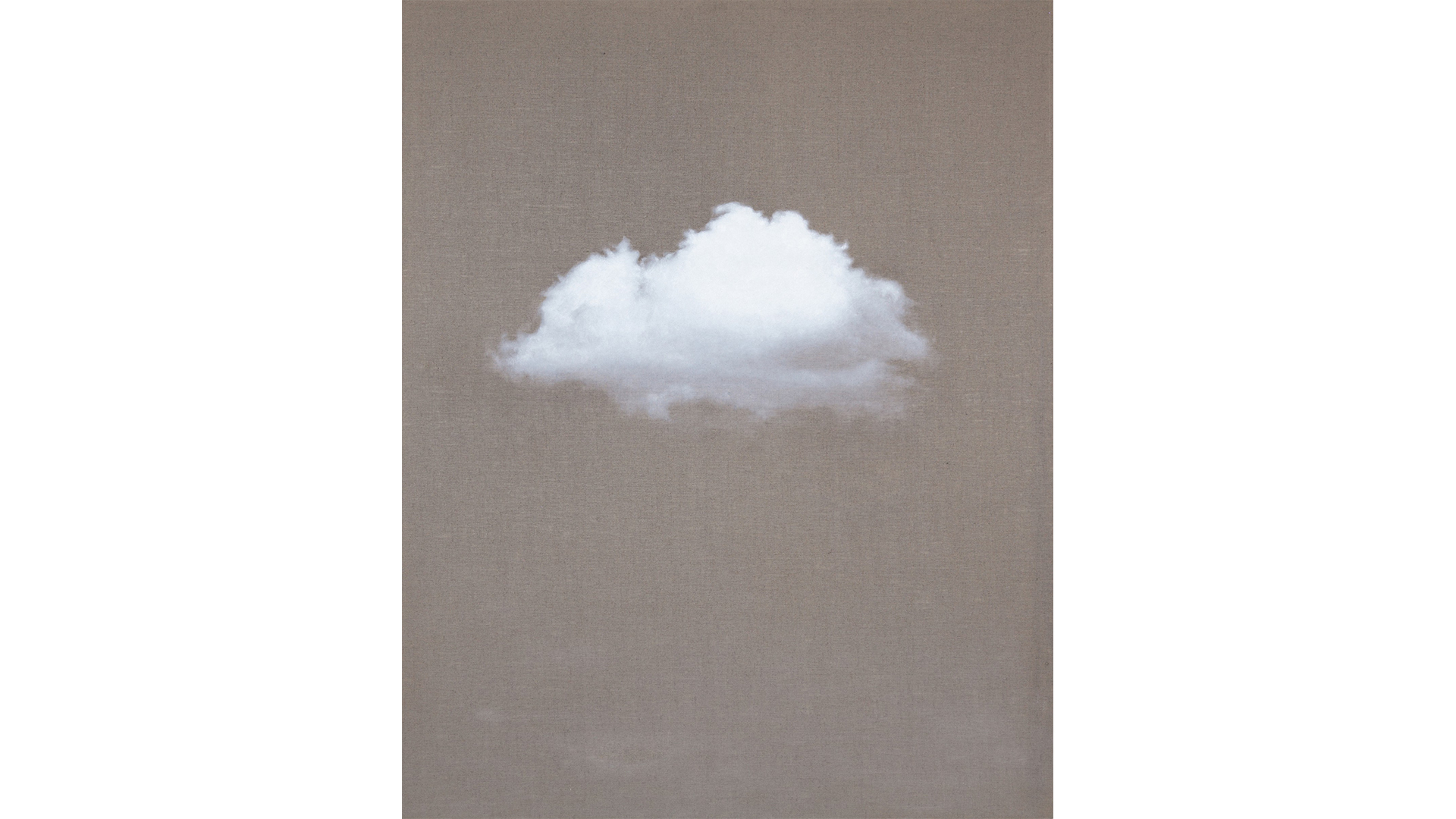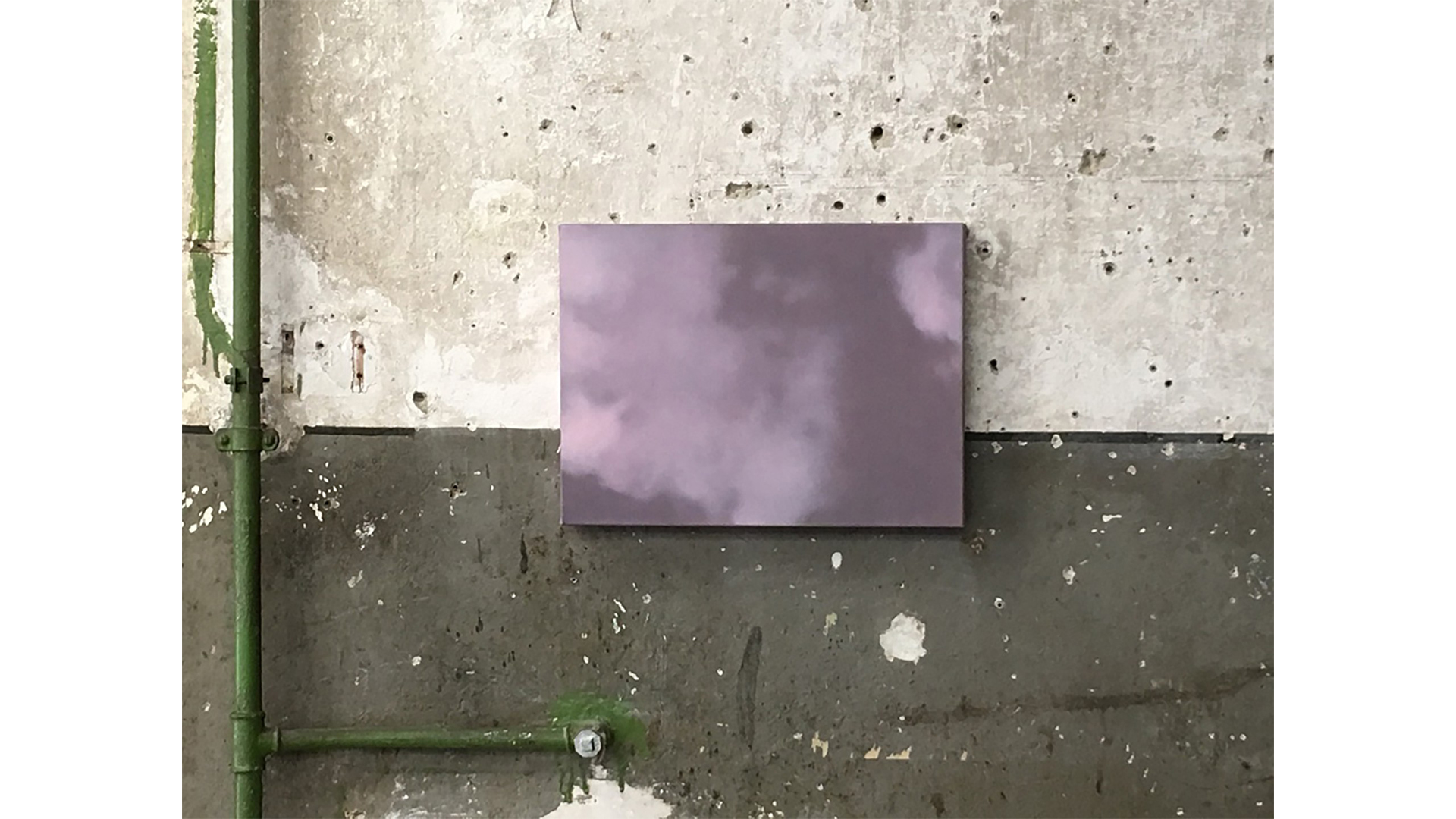My Cloud since 2014
Mingjun Luo's clouds represent a significant stage, an astonishing degree zero of simplicity and the self-evident. These are not trompe-l'oeil clouds: they cannot be illusionistic given the assertive presence of the raw, unprimed canvas they are painted on. They contain no symbolic meaning, no reference to any world beyond themselves; all they offer is a minimum of heavily diluted white paint, virtually nothing, more than an intimation of paint – even, I would say, a paradoxical effacing of paint. This is, once again, the Chinese ink technique, unavoidably monochromatic, but here in the negative: white paint on dark canvas. The artist simultaneously uses and reverses a traditional principle described by Hubert Damisch: "the painting of the 'scholars', which is the subject of most of the Chinese treatises on landscape painting, first and foremost among them Shitao's Comments, is monochrome painting that uses only tonal differences." While drawing on some of the parameters of classical Chinese painting, Mingjun Luo's clouds decidedly do not belong to the landscape tradition, one of whose favoured motifs is a mountain bathed in mist or clouds. "Having no fixed form in the Chinese view of things, clouds are especially effective embodiments of the mutations taking place within what the Chinese perceive as a universe in a perpetual state of flux." Each landscape painting is an emanation of this philosophy of the relational, of the circulation between yin and yang. For a Chinese traditional painter a cloud cannot be considered simply for itself – which is exactly what Mingjun Luo does when she sets one at the centre of her compositions, with no mountain for it to veil and/or reveal. Yet when the cloud is "placed" on the raw cotton, its random shape enters the fine, straight-line weave of the canvas, soaking the vegetal surface with pigment and oil in a perfect symbolising of the earth/sky dialectic. Emptiness here is more than mere unfinishedness: it is deep receptivity.
